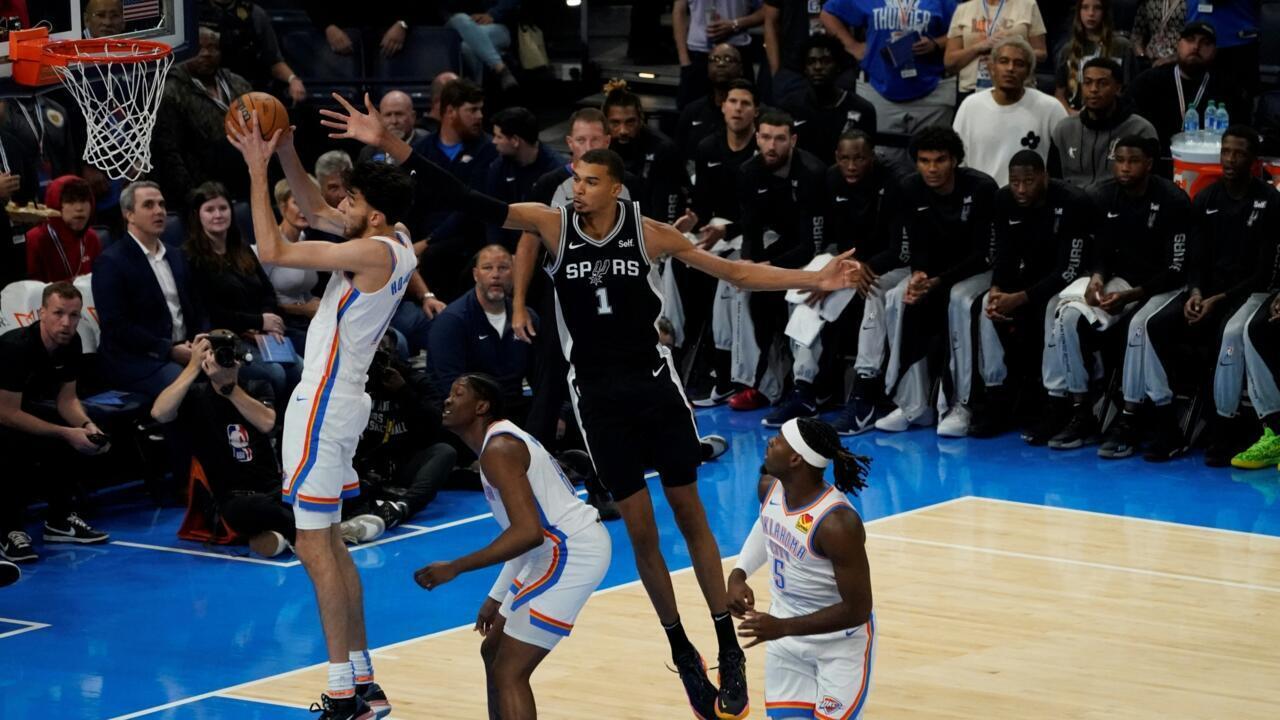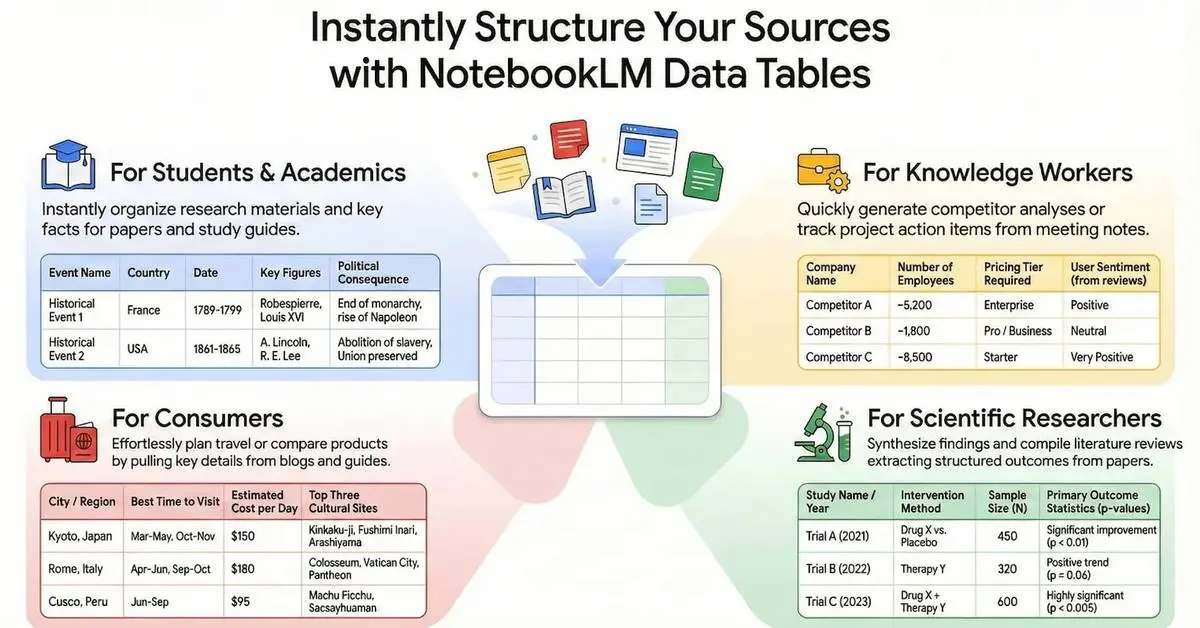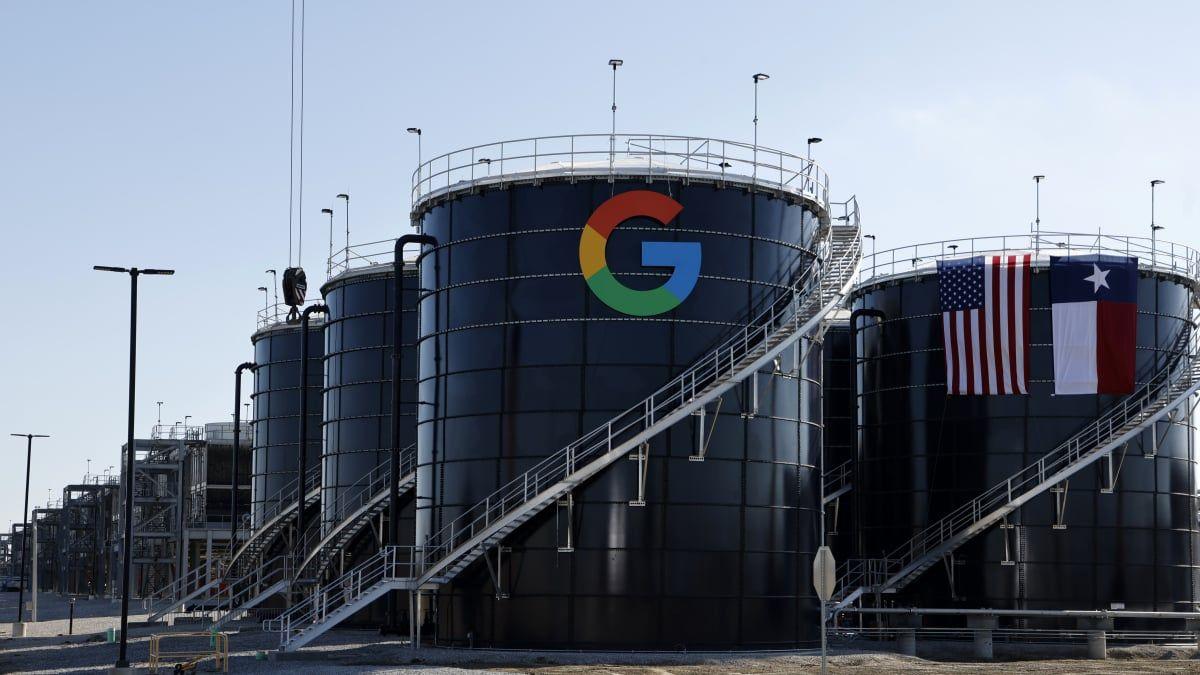NBA Turns to AI as Achilles Injuries Plague the League
2 Sources
2 Sources
[1]
But Is It the Shoes? However You Cut It, the NBA Has an Achilles Problem
A rash of Achilles tears in the last NBA season has many pointing fingers at several culprits, and the league is turning to AI technology in hope of a solution. It's been 30 years since the former Charlotte Hornets forward Scott Burrell tore his Achilles tendon during a game against the Philadelphia 76ers, and the memory is still fresh in his mind. "I went to push off and it just popped, and I thought someone was behind me and kicked me," Mr. Burrell told the Sun. There was no one there, however. He had partially torn his Achilles tendon, an injury that takes NBA players anywhere from nine months to a year of recovery before they can get back on the court. Mr. Burrell returned to the court for the Hornets the following season and went on to play until 2001, winning a championship as a member of the Chicago Bulls in 1998. Mr. Burrell was among the 45 Achilles tendon ruptures, 42 of them "full" ruptures, in the NBA between 1990 and 2023, according to a 2024 report in the Orthopaedic Journal of Sports Medicine. But now the NBA is experiencing an Achilles injury "epidemic." Seven players alone tore their Achilles tendons in the 2024-2025 season, the most in one season in NBA history. Three All-Star players suffered Achilles tears - Milwaukee Bucks guard Damian Lillard, Boston Celtics star Jayson Tatum, and Indiana Pacers guard Tyrese Halliburton - during the NBA playoffs. Why these injuries have been happening in greater numbers, and to the game's biggest stars, is a mystery to many, leading some to point fingers at the style of shoes players wear and the number of games they play in a season. The former NBA All-Star Kevin Garnett pointed a finger at calf strains, which both Messrs. Halliburton and Tatum had leading up to their injuries. "If anybody knows the body, your calves are your brakes. The one thing that supports the calves is your Achilles. So if your calf is the first thing to shut down, you have to think about how things are built," Mr. Garnett said on his KG Certified podcast. Both Messrs. Halliburton and Tatum were playing through calf strains prior to tearing their Achilles. Before his injury, Mr. Burrell was playing through Achilles tendonitis and heel bursitis, the result of a "pump bump," or Haglund's deformity, in which a bony growth puts pressure on the joints of the feet. It was his second season in the NBA, and his game averages of 11.7 points and 5.7 rebounds had him on pace for the league's Most Improved Player award. "Obviously it was healed, and I was ready to go, but in the back of your mind, I'm like, 'I don't want to do that again,'" Mr. Burrell, who since 2015 has been the head coach of Southern Connecticut State University's men's basketball team, tells the Sun. The recent rash of Achilles injuries has ex-players like the former Los Angeles Lakers guard Nick Van Exel blaming the low-cut shoes NBA players today regularly wear in favor of high-tops. "There have been Achilles tears throughout the years but my thoughts on them is that they happen more now and I think it has something to do with them (damn) lows the players wear nowadays. Cover them ankles up fellas," he posted on X. Mr. Tatum was wearing his signature Jordan Tatums 2 sneakers when he tore his Achilles during a playoff game against the New York Knicks. Mr. Lillard was wearing his signature Adidas Dame 9 sneakers during his injury. Mr. Halliburton was wearing his signature Puma sneaker. All three sneakers are considered "low-top" shoes. The Houston Rockets forward Kevin Durant, who also plays in signature-brand Nike low-cut sneakers, disagreed with the growing chorus of low-cut sneaker critics, which included Cam'ron, an American rapper, who pleaded, in caps, for players to "STOP WEARING THESE LOW CUTS AND 3 QUARTERS" in an Instagram post. "Brother, that has absolutely nothing to do with these injuries," Mr. Durant replied on Instagram. In 2019, Mr. Durant, while playing for the Golden State Warriors, tore his Achilles during an NBA Finals game against the Toronto Raptors while wearing low-top shoes. "Sneakers can play a secondary role; on their own, they may not exactly cause a tear, but with overuse injury already present, they may not help," a clinical professor of orthopedics at the Icahn School of Medicine at Mount Sinai, David Gitlin, tells the Sun. "The most obvious part of the (footwear) that can increase load on the Achilles tendon is a low heel or minimalist style of shoe that is more common in recent years," Dr. Gitlin added. A big culprit, in Mr. Burrell's mind, is the proliferation of Amateur Athletic Union, or AAU, leagues, where teenagers spend the entire year playing nothing but basketball. Mr. Burrell was a three-sport athlete at Hamden High School in Connecticut, excelling in football and baseball (he was drafted by the Toronto Blue Jays in 1990) before joining the University of Connecticut Huskies basketball team. He would become the first-ever college basketball player to register 1,500-plus points, 750-plus rebounds, and 300-plus steals in his collegiate career. He believes playing sports on grass helped him turn into "a complete athlete" and develop new muscles that he otherwise wouldn't have if he played just basketball year-round. "The kids I recruit now, I do love to hear about them playing football, but you have to get who you can get when you're recruiting," Mr. Burrell tells the Sun. "It's scary because all these kids do is just play basketball year-round." AAU teams sometimes play more than five games during a weekend tournament. It's this overspecialization of one sport, especially for young adults who are still developing, that can cause long-term effects on their lower body. "Over-specialization can lead to increased risks of overuse injury because the athletes don't have variability in movements if they are too specialized. Over-specialization can also, in some cases, result in muscle imbalances that are sport-related," the doctor of physical therapy and exercise physiologist at Gait Happens, Dr. Milica McDowell, tells the Sun. Despite spending 17 years in the NBA, Alton Lister said he was never the same after he tore his Achilles tendon while playing for the Golden State Warriors in 1989. Now coaching basketball in the Philippines, Mr. Lister tells the Sun that players like Messrs. Tatum and Halliburton are suffering too much wear and tear at a young age. "A lot of these guys have been playing nonstop since they were kids -- AAU, camps, year-round training with no real break. The body eventually gives out. Shoes might play a small part, but this is mostly about overuse." Mr. Lister tells the Sun. Messrs. Halliburton and Tatum played for the USA basketball team in the 2024 Summer Olympics in Paris, with Mr. Tatum fresh from winning an NBA championship. "They went from an NBA season to the Olympics to a new season... These guys do so much, " Mr. Burrell tells the Sun. The NBA commissioner, Adam Silver, disagreed with some assertions that the number of games NBA players now play throughout the year is the primary culprit. "It is interesting, when we look back at the last 10 years, the majority of Achilles injuries happened before the All-Star break, so it's not clear it's the number of games," Mr. Silver said during a recent interview. To help get to the root of the problem, Mr. Silver said he is turning to artificial intelligence, or AI, technology to "ingest" all the video "of every game a player has played in to see if you can detect if there's some pattern that we didn't realize that leads to Achilles injury." Mr. Silver arguably has good cause for concern. Messrs. Tatum, Lillard, and Halliburton are among his league's biggest draws. "What can the NBA do? They make a lot of money," Mr. Burrell said. "You're still going to have Achilles tendon tears. It's just part of the game." While players can return from Achilles surgeries fully healthy, the mental impact of the injury can stay with an NBA player forever. "I think the hardest part is trusting it again. I still never fully trusted my Achilles after it healed," Mr. Burrell tells the Sun. "It was tough, no sugarcoating that. Physically, it hurts, but the mental side is where it really hits. You start questioning yourself. But if you stay locked in and stick to the rehab, you come out of it stronger -- mentally and physically," Mr. Lister tells the Sun.
[2]
Thunder GM Sam Presti says NBA can't put 'head in the sand' about injuries: 'It's almost insulting' - CBSSports.com
The NBA needs to be more honest about injuries, according to the architect of the team that just won the championship, At his end-of-season press conference Monday, Sam Presti, the executive vice president and general manager of the Oklahoma City Thunder, told reporters that there is no sense in refusing to acknowledge that the increased physical demands of the game and the schedule have led to injuries. "I think the one thing we have to do is get away from the defensive nature of trying to convince people, players and teams that there's no connection between the loads and the injuries," Presti said. "We're kind of bordering on a level of -- it's almost insulting, you know? It doesn't mean it's anyone's fault. It doesn't mean we don't want our best players playing every single night. It's not a matter of players not wanting to play or being soft or anything like that. But I don't think we should be putting our head in the sand and acting like there's no correlation." After three Achilles tears during the playoffs -- stars Tyrese Haliburton of the Indiana Pacers, Jayson Tatum of the Boston Celtics and Damian Lillard of the Milwaukee Bucks all went down -- there is increased attention on this issue, but it by no means new. In January 2024, the NBA sent a 57-page memo to teams on the subject of load management. It stated that, based on data from 10 years of regular-season games, it did not find that resting players made them less susceptible to injury. Technically, it did not conclude that rest doesn't mitigate injury risk, either, but it effectively muddied the waters, arguing that it does not have evidence that load management works. To Presti, a sample like the one in that study is insufficient, as it does not take into account how the game has changed. Players have to move faster and cover much more ground than they used to. Oklahoma City made it to the NBA Finals in part because it balanced a particularly intense style of play with a deep rotation, allowing it to keep its starters' minutes relatively low. Indiana did the same thing. "If we're pointing to data, the data is from 20 years ago or 10 years ago," Presti said. "The game is a totally different sport than it was even several years ago because of the amount of possessions, the way the offenses work now. It's not people standing around the 3-point line waiting for double teams and then the ball to get kicked out. There's so much movement in every possession. We're playing almost like two games compared to 10 years ago and how involved the bodies are." Thirteen months ago, Presti said the NBA needed to pay attention to how its recent policies were "colliding with each other," making the case that its anti-rest policies and changes to the schedule and the officiating could result in star players being unavailable in the playoffs. The Thunder may have benefited from an opposing star being diminished -- and then seriously injured -- late in the Finals, but Presti is still concerned about this. "Everyone's trying to play as much as possible because of the 65-game rule," Presti said. "Then you take into consideration the fact that the last half of the schedule is more condensed than it has been In the last 10 years because the in-season tournament cannot have back-to-back games on those days. So you've got much less flexibility in the schedule, a game that's really redlining compared to past seasons in terms of the overall movement and torque on your body, the uptick in physicality that we have because that's where we want the game to go -- and that's a good thing, but then you go right into the postseason and those games are even more physical. So it's not a guys-don't-want-to-play thing. I think it's more a we-want-the-guys-to-be-able-to-play thing. And putting our heads together and be rational about it and not defensive and [not] trying to produce numbers and data that indicates that, the more you play, the more healthy you are." Before Game 1 of the Finals in Oklahoma City, NBA commissioner Adan Silver told reporters that the league and its competition committee would continue to study "every form of data we can get our hands on." He refrained, however, from saying that the current schedule is a problem. "I don't want to make a change just to make a change," Silver said. "People are asking, 'Should we shorten the season, spread the games out over a longer period of time?' I don't necessarily think we should reduce the number of games. If we had more days to work with, there is no question that if players are better rested, putting aside injuries, that that potentially leads to a little bit of heightened competition. I think a little bit what you see in the playoffs, too, because they're better rested. We're up against also players needing to take time off, needing to have an offseason." Asked specifically about the financial aspect of potentially shortening the season, Silver reiterated the league's stance: It does not accept the premise that fewer games would mean fewer injuries. "Money's part of it, there's no question about it," Silver said. "We're a business. Having said that, I don't really see the benefit to reducing the number of games. People used to say you should reduce the number of games because it will lead to a reduction in a number of injuries. We have absolutely no data to suggest that. If that were the case, you would think you have more injuries in April than October. We don't see that. Or you would think you'd see more injuries in the playoffs than you do in the regular season. We don't see that, either." Last week, before the NBA Draft, Silver told ESPN's Malika Andrews that the league is trying "to figure out what's going on" with Achilles injuries specifically. "We had already convened a panel of experts before Tyrese's most recent Achilles rupture," Silver said. "So we had seven this year. We had zero last year under the exact same circumstances, and the most we've ever had in a season [before this one] is four. The NFL has had a rash of Achilles issues as well." Silver said on ESPN that it is "not clear" that the 82-game schedule is a factor, citing another 10-year sample. "When we look back at the last 10 years, the majority of the Achilles injuries have happened before the All-Star break," he said. He also pointed to other factors that likely have something to do with it. "Modern NBA players, even when they're not playing games, sometimes in the summer they're working harder than they are during the season when they're playing three games a week," Silver said. "They're often playing every day. Some experts think it may have more to do with youth basketball. It may have as much to do with what they do from 10 to 19; increasingly, they're single-sport athletes. These guys train, also, harder. When I talk to veteran players -- and I was talking to Andre Iguodala the other day, the head of the players' association -- he was saying he's counseling a lot of these players that they need more rest on their body in the offseason. I mean, you've got guys working out three times a day." Then Silver said that he was hopeful that artificial intelligence could help prevent these injuries from occurring. He said that AI could potentially "ingest all video of every game a player has played in to see if we can detect there's some pattern that we didn't realize that leads to an Achilles injury." Unlike Golden State Warriors coach Steve Kerr, Presti stopped short of arguing that the NBA must shorten the season. "I don't know all the things that they're balancing," he said. Presti did, however, argue that the goal is to have "the best players on the floor for the biggest games" and that the league needs to "have respect for the players" in terms of how it frames this discussion. The implication was clear: The longer that the league maintains that there is nothing that suggests more rest and recovery would mean fewer injuries, the more disrespectful it is.
Share
Share
Copy Link
The NBA is experiencing an unprecedented surge in Achilles tendon injuries, prompting concerns about player safety and sparking debates on potential causes. The league is now exploring AI technology to address this growing issue.
NBA's Achilles Heel: A Growing Injury Crisis
The National Basketball Association (NBA) is grappling with an unprecedented surge in Achilles tendon injuries, prompting concerns about player safety and sparking debates on potential causes. The 2024-2025 season saw a record-breaking seven players suffer Achilles tears, including All-Stars Damian Lillard, Jayson Tatum, and Tyrese Halliburton during the playoffs
1
2
.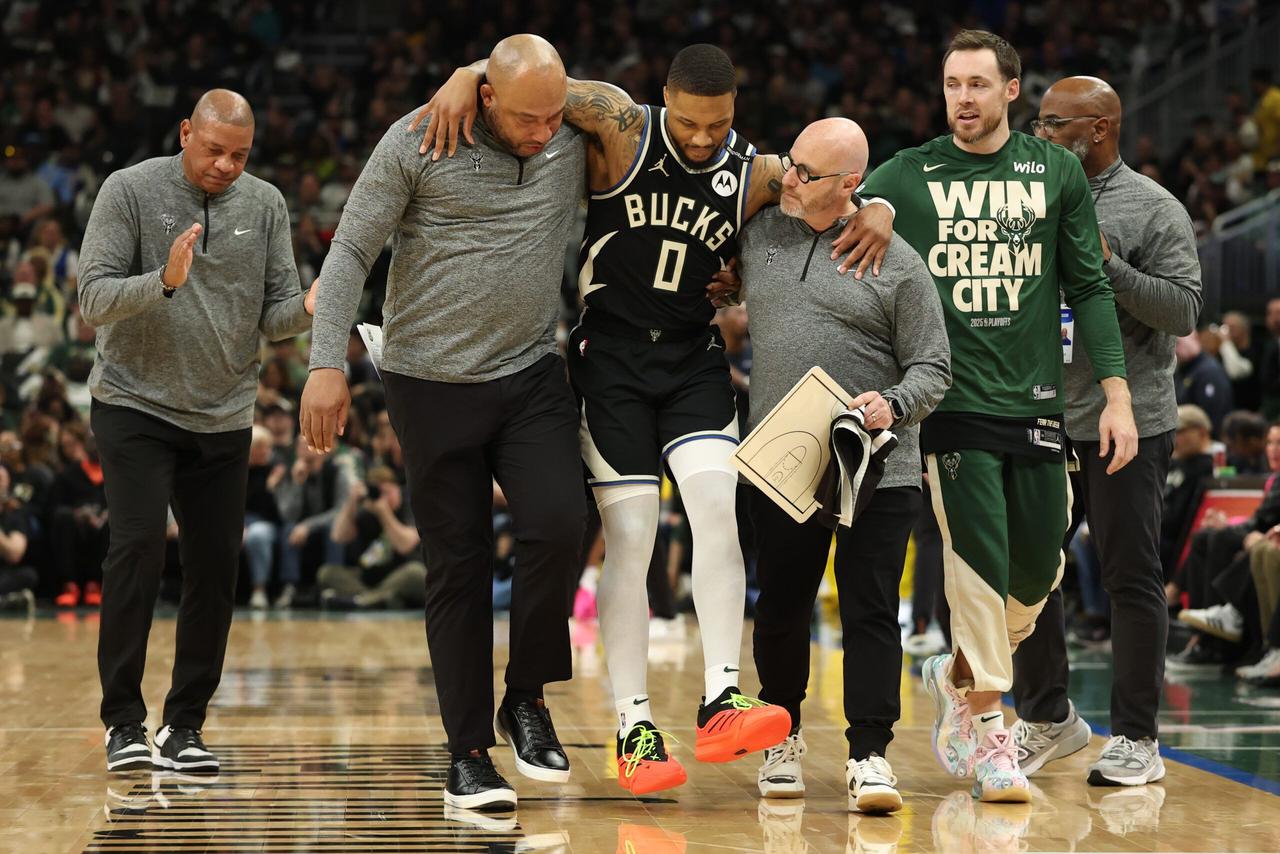
Source: NY Sun
Historical Context and Current Epidemic
Between 1990 and 2023, the NBA recorded 45 Achilles tendon ruptures, with 42 being full ruptures. However, the recent spike in injuries has raised alarms across the league. Scott Burrell, a former NBA player who experienced an Achilles tear 30 years ago, shared his perspective on the injury's impact and recovery process
1
.Debating the Causes
Several factors have been suggested as potential contributors to the rise in Achilles injuries:
-
Footwear: Some, like former NBA player Nick Van Exel, blame the popularity of low-cut shoes among players. However, others, including Kevin Durant, disagree with this theory
1
. -
Overspecialization: Scott Burrell points to the year-round focus on basketball, particularly in AAU leagues, as a potential factor. He suggests that playing multiple sports could help develop a more well-rounded athlete
1
. -
Game Intensity: Oklahoma City Thunder GM Sam Presti highlights the increased physical demands of modern basketball, with more movement and higher-paced play
2
.
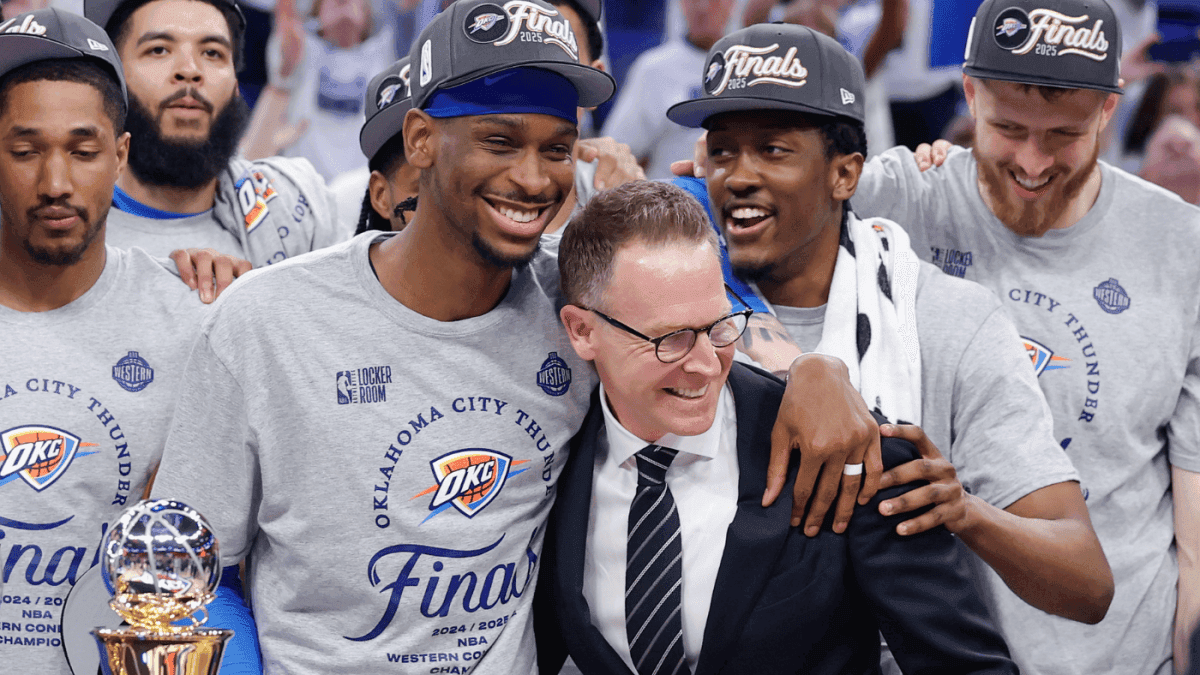
Source: CBS Sports
- Schedule Demands: The NBA's 65-game rule and the condensed schedule due to the in-season tournament have been cited as potential contributors to player fatigue and injury risk
2
.
Related Stories
NBA's Response and Future Directions
The league has been criticized for its stance on the relationship between player load and injuries. In January 2024, the NBA released a memo stating that it found no evidence linking rest to reduced injury risk. However, this approach has been met with skepticism from some team executives
2
.NBA Commissioner Adam Silver has acknowledged the need for further investigation into the Achilles injury trend. The league is now turning to artificial intelligence technology in hopes of finding a solution to this growing problem
1
2
.Balancing Player Health and League Interests
The debate around injuries has highlighted the tension between player health and the league's business interests. While some argue for reducing the number of games or spreading them out over a longer period, the NBA maintains that there is no clear evidence that fewer games would lead to fewer injuries
2
.As the league continues to grapple with this issue, the use of AI technology may offer new insights into injury prevention and player management. The coming seasons will likely see increased focus on finding innovative solutions to protect players while maintaining the competitive integrity and entertainment value of the sport.
References
Summarized by
Navi
Related Stories
Recent Highlights
1
Google launches Gemini 3 Flash as default AI model, delivering speed with Pro-grade reasoning
Technology
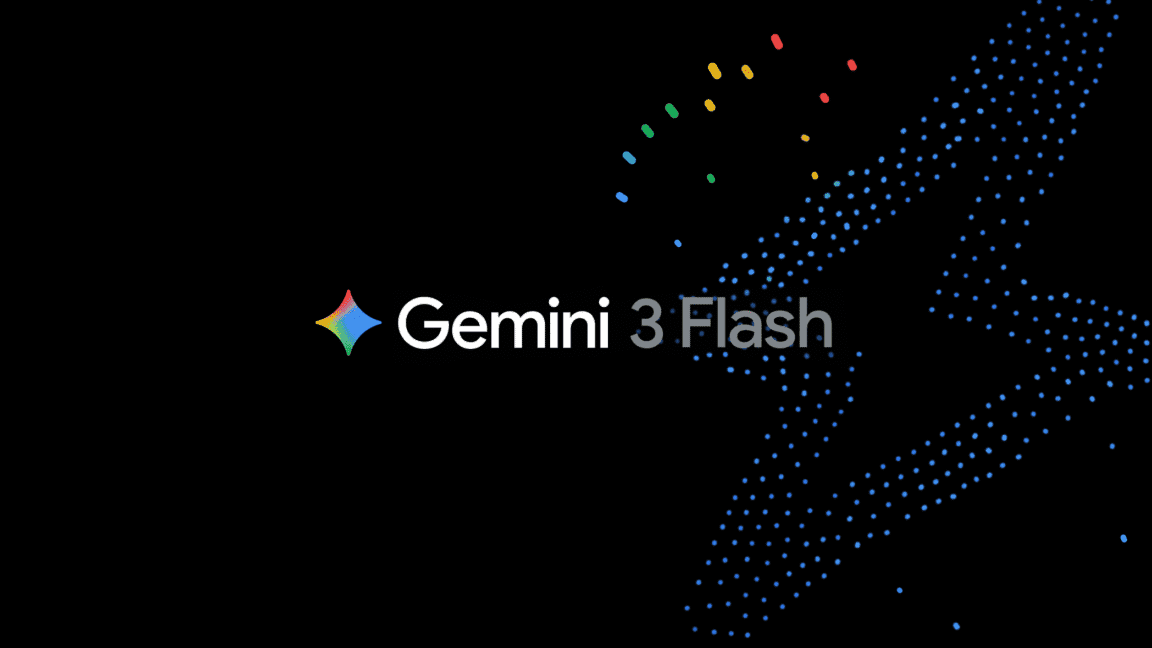
2
OpenAI launches GPT Image 1.5 as AI image generator war with Google intensifies
Technology
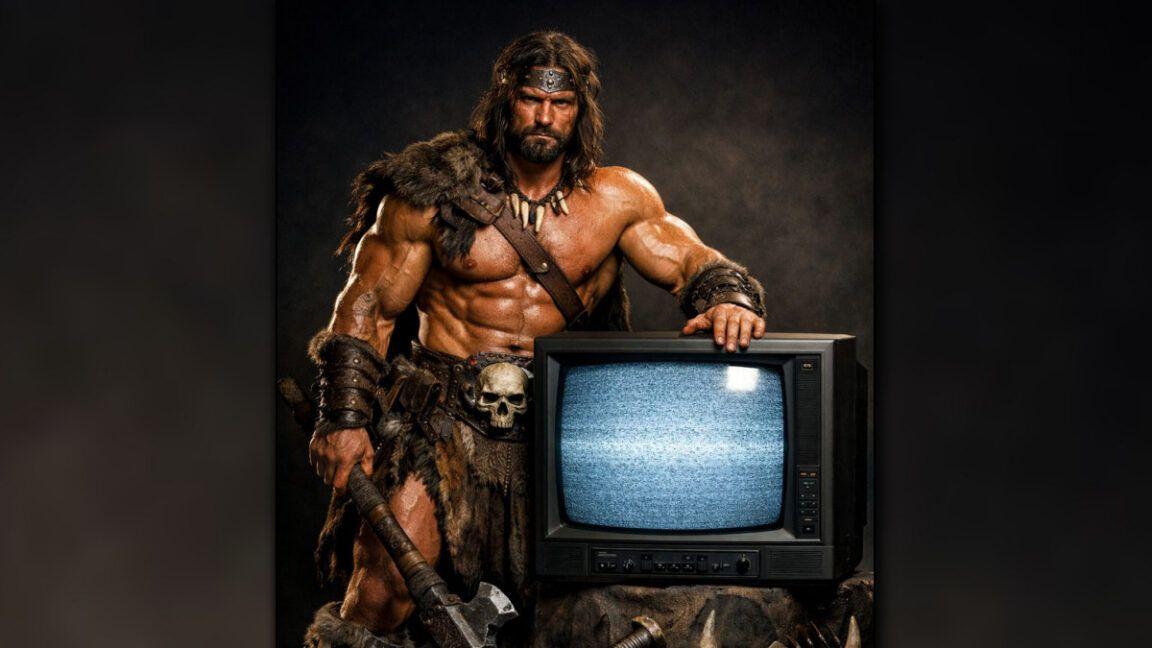
3
OpenAI launches ChatGPT app store, opening doors for third-party developers to build AI-powered apps
Technology

